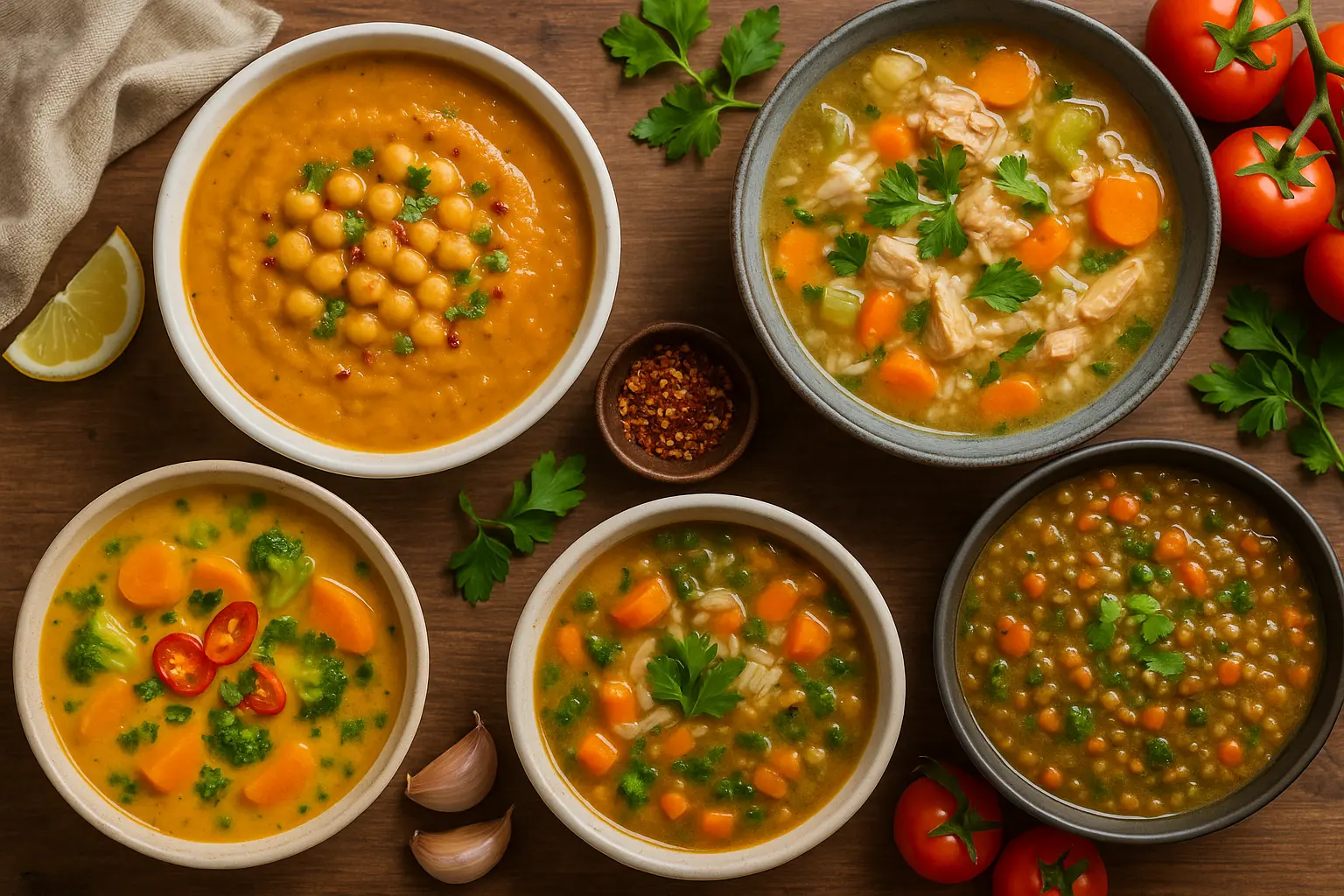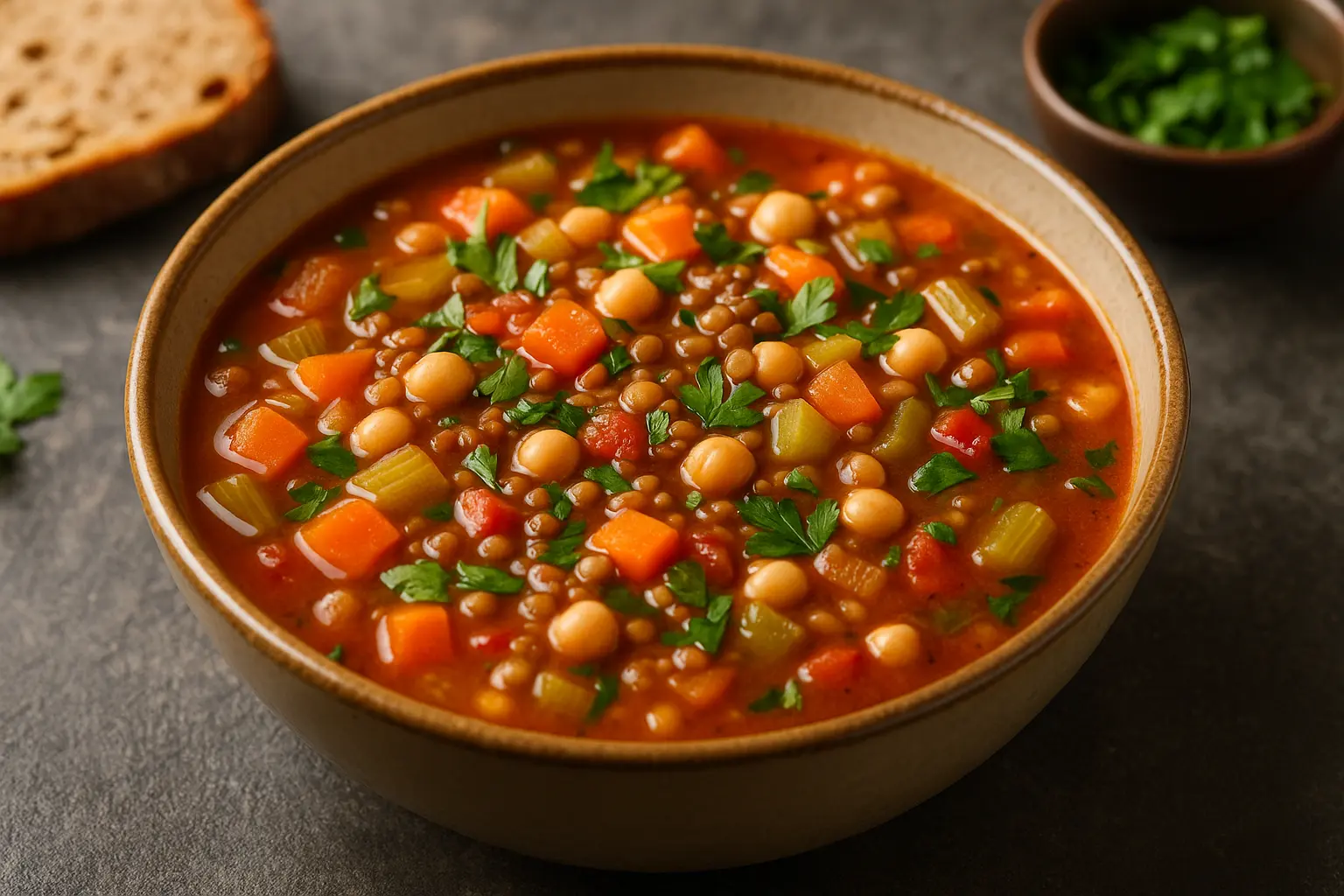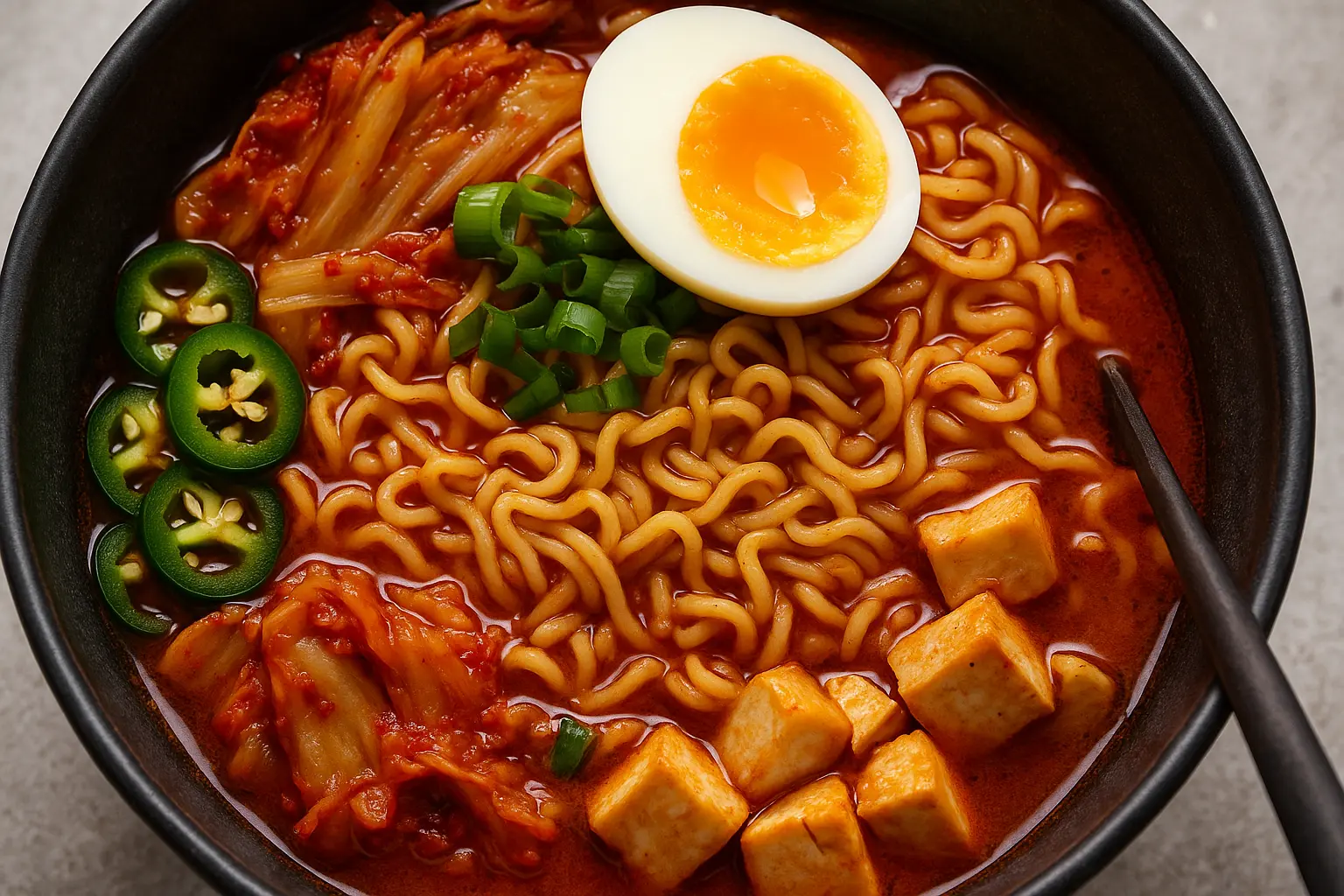There’s something timeless about a steaming bowl of soup. No matter where you go in the world, every culture has a signature broth, stew, or pot of simmering goodness that nourishes both body and soul. From the miso soups of Japan to the hearty lentil stews of the Middle East, soup transcends food—it’s medicine, tradition, and memory in a bowl.
Soup is often the first meal we’re offered when we’re unwell. It’s the dish that brings families together around the table in winter. It’s the warm hug that sustains people through hard times. And most importantly, it’s deeply personal—reminding us of home, childhood, or travels abroad.
In this article, we’ll journey across continents to explore the world’s most beloved comfort soups—many of which are naturally vegan, gluten-free, or easily adaptable. We’ll also explore their history, cultural significance, and how to recreate them in your own kitchen.

Part I: Asian Soups – Light, Healing, and Flavorful
1. Japanese Miso Soup – The Quintessential Healing Broth
Miso soup isn’t just food in Japan—it’s tradition. Made with fermented soybean paste (miso), kombu (seaweed), and dashi (broth), this soup is a staple of Japanese breakfasts and dinners alike.
Why it comforts: The umami-rich miso paste aids digestion, boosts probiotics, and provides a soothing savory flavor that feels like nourishment in liquid form.
Vegan/Gluten-Free Twist: Use gluten-free miso and vegan dashi made from mushrooms and seaweed.
Soulful Element: Japanese families often say miso soup ties the household together—its daily presence is like a culinary anchor.
2. Chinese Hot and Sour Soup – A Balance of Yin and Yang
This Chinese classic blends vinegar’s sour tang with the warmth of white pepper, mushrooms, and tofu.
Why it comforts: The spicy-sour combination is believed to restore balance in the body, especially when fighting colds.
Healing Notes: Mushrooms add antioxidants, while vinegar helps with digestion.
Cultural Angle: Often served in Chinese households during chilly months, symbolizing balance and wellness.
3. Korean Kimchi Jjigae – Fermented Fire in a Bowl
Kimchi jjigae is a fiery stew made with aged kimchi, gochugaru (chili flakes), tofu, and vegetables.
Why it comforts: Fermented kimchi provides probiotics, while the chili heat clears sinuses and warms the body.
Adaptation: Replace meat with mushrooms or tofu for a vegan-friendly version.
Soulful Note: For many Koreans abroad, kimchi jjigae is the dish that tastes like home.
4. Thai Tom Yum Soup – Aromatic Healing with a Spicy Kick
Tom Yum, with its lemongrass, lime leaves, galangal, and chili, is Thailand in a bowl.
Why it comforts: Bright, zesty, and cleansing—it wakes up the senses while warming the body.
Health Factor: Lemongrass aids digestion and galangal has anti-inflammatory properties.
Global Appeal: Its bold flavors have made Tom Yum one of the world’s most beloved soups.
5. Vietnamese Pho – A Soulful Street Classic
Pho is a slow-simmered broth enriched with spices like star anise, cinnamon, and cloves, typically served with rice noodles and fresh herbs.
Why it comforts: The fragrant broth is deeply nourishing, while the fresh herbs balance richness with brightness.
Vegan Version: Swap beef or chicken for mushrooms, bok choy, and tofu.
Cultural Meaning: For Vietnamese people, pho is more than food—it’s a cultural heritage and symbol of resilience.
Part II: European Soups – Rustic, Rich, and Heartwarming
6. French Onion Soup – The Golden Caramelized Classic
Caramelized onions simmered in broth, topped with toasted bread and melted cheese—it’s indulgence in liquid form.
Why it comforts: The sweetness of onions layered with savory broth creates a deeply warming flavor.
Vegan Swap: Use dairy-free cheese or simply enjoy with garlic-rubbed sourdough toast.
History: This soup dates back to Roman times but became iconic in Parisian bistros.
7. Italian Minestrone – A Bowl of Seasonal Abundance
Minestrone celebrates vegetables, beans, and pasta in a hearty tomato-based broth.
Why it comforts: It’s filling, adaptable, and seasonal—every family has their version.
Vegan/Gluten-Free: Swap pasta for gluten-free noodles or rice.
Cultural Tradition: Italians treat minestrone as a way to use what’s in the garden—resourceful yet delicious.
8. Russian Borscht – Vibrant Beetroot Warmth
This beet-based soup, often served with a dollop of sour cream, is earthy, tangy, and satisfying.
Why it comforts: The deep red color and earthy sweetness feel grounding.
Health Perk: Beets are rich in iron and antioxidants.
Symbolism: In Eastern Europe, borscht represents resilience through harsh winters.
9. Spanish Gazpacho – Summer Comfort, Chilled
Not all comfort soups are hot. Gazpacho, made from tomatoes, cucumbers, peppers, and olive oil, is a refreshing Spanish classic.
Why it comforts: It cools the body during scorching summers while delivering a punch of vitamins.
Vegan/Gluten-Free by default: Just skip the bread thickener or use gluten-free.
Cultural Context: In Andalusia, gazpacho is the ultimate humble peasant dish turned iconic.
Part III: Middle Eastern & African Soups – Spiced and Soulful
10. Moroccan Harira – Ramadan’s Nourishing Soup
Harira, a tomato-lentil-chickpea soup, is the traditional dish to break the fast during Ramadan.
Why it comforts: It’s hearty yet balanced, restoring energy after long days.
Healing Qualities: Lentils and chickpeas provide protein and iron, while spices like turmeric add anti-inflammatory benefits.
Spiritual Meaning: Harira is not just soup—it’s a symbol of togetherness during Ramadan.
11. Ethiopian Shorba (Lentil Soup) – Spice-Infused Warmth
Made with red lentils, garlic, onions, and berbere spice, this is Ethiopia’s take on comfort.
Why it comforts: Simple ingredients transformed by bold spice blends make it unforgettable.
Nutritional Note: Lentils provide plant-based protein, making it perfect for vegan diets.
Soulful Angle: Ethiopian cuisine treats shared meals as acts of love and hospitality.
12. Turkish Mercimek Çorbası (Lentil Soup) – Everyday Nourishment
This silky red lentil soup is a Turkish household staple, often served with a squeeze of lemon.
Why it comforts: Smooth, light, and tangy, it’s both refreshing and filling.
Healing Factor: Lemon brightens digestion, while lentils provide lasting energy.
Cultural Tie: In Turkey, lentil soup is the everyday meal that bridges humble kitchens and fine restaurants alike.
Part IV: The Americas – Hearty Bowls with Deep Roots
13. Mexican Pozole – A Festive Comfort
Pozole is a celebratory hominy-based soup, flavored with chili and loaded with toppings like cabbage, radish, and lime.
Why it comforts: The rich broth paired with crunchy toppings makes every spoonful exciting.
Healing Note: Traditionally eaten during festivals, pozole symbolizes community.
Vegan Version: Use mushrooms or jackfruit in place of pork.
14. Caribbean Callaloo Soup – Greens and Coconut Harmony
Callaloo, made with leafy greens, okra, and coconut milk, is creamy, nutritious, and comforting.
Why it comforts: A balance of creaminess and freshness, with hints of spice.
Cultural Significance: Callaloo is both everyday food and celebratory dish in the Caribbean.
15. American Chicken Noodle Soup (Vegan Twist) – The Cold Cure
No list is complete without chicken noodle soup. For a vegan spin, replace chicken with jackfruit or chickpeas.
Why it comforts: Associated with healing colds, warming hearts, and childhood memories.
Global Adaptation: Its simplicity makes it beloved worldwide.
Part V: Tips for Making Comfort Soups at Home
Use Seasonal Vegetables – Soups taste best when built around what’s fresh.
Layer Flavors Slowly – Caramelize onions, toast spices, and simmer broths for depth.
Don’t Forget Garnishes – Fresh herbs, a squeeze of lemon, or a drizzle of chili oil can transform a simple bowl.
Batch Cook & Freeze – Comfort should always be available—make extra and store.
Balance Texture – Mix chunky and smooth, creamy and brothy, for satisfying variety.
Conclusion – Soup as a Global Love Language
Comfort soups tell the stories of our cultures, our hardships, and our celebrations. Whether it’s sipping hot miso soup in Tokyo, savoring minestrone in Rome, or breaking the fast with harira in Marrakech, the universal truth remains: soup heals.
Each bowl carries not just flavor, but memory, connection, and care. And in a world that often feels rushed, soup reminds us to slow down, savor, and find comfort in the simplest of things.
So, the next time you crave comfort—look beyond borders. Somewhere in the world, a pot of soup is simmering that might just heal your soul.
Leave a comment
Your email address will not be published. Required fields are marked *




















